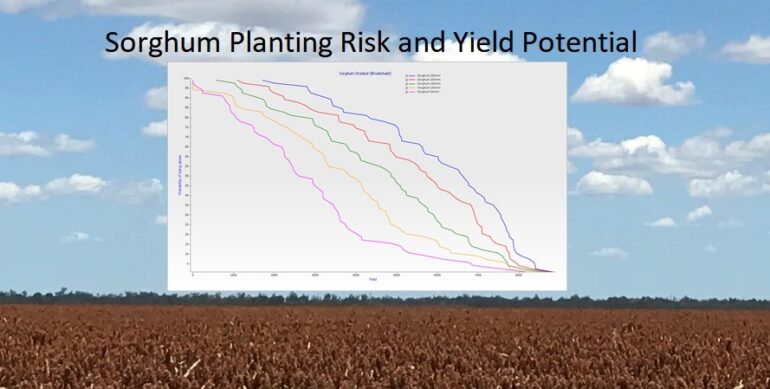In this article I will explore the use of the APSIM modelling software to evaluate the risks associated with planting Sorghum at different soil moisture rates and the associated yield potential.
Sorghum Planting Risk and Yield Potential using APSIM


In this article I will explore the use of the APSIM modelling software to evaluate the risks associated with planting Sorghum at different soil moisture rates and the associated yield potential.
The Cluster Caterpillar (Spodoptera Litura) are another of those occasional pests on the Downs that are capable of impacting a variety of different common broad acre and vegetable crops. They tend to be more prevalent in coastal and tropical regions and can cause significant damage in these districts. Their presence in the Ord in Western Australia contributed to the failure of cotton in the region from 1964 to 1974.[1]
The eggs are often laid in a crowd together and small larvae can often be found bunched on the same region of a leaf. This behaviour leads to their common name of Cluster Caterpillar. The larger adults are very easy to identify with dark triangles running down the top sides of the body. The following short video was taken in the field and shows these markings in detail.
Here is another showing a large Spodoptera's typical movement pattern.
Smaller ones can be identified by two dark patches on ‘shoulders’ behind the head. The video below was taken in the field near Nangwee and shows the ‘shoulder’ patches and the movement typical of a Spodoptera.
This video shows them at first instar.
This website has some incredibly detailed photos of Spodoptera that should help anyone with identification.
Control of Spodoptera can be necessary in bean crops during the vegetative stages where defoliation (>30%) is severe enough to impact yield. Flowering and podding stages of a crop are more vulnerable to defoliation and so should draw treatment when defoliation approaches 15-20%.[2] There may also be some risk to flowering points and pods so these should also be monitored for damage.
I’ve only had limited experience of Spodoptera Litura in Cotton and Soybean on the Darling Downs but Black Earth’s other operating area in the Burdekin regularly deals with it as a pest. It does appear to have some capacity to deal with the Bollgard II Bt genes at certain times of the year as I have occasionally found large specimens on cotton leaves in fields with no weeds. DAF Qld’s website does indicate that Bacillus thuringiensis (Bt) only controls them when they are small. Another interesting point to note is that they cannot be controlled with NPV's such as Vivus Max or Gemstar.
Written by
Robert Boulton
[1] https://www.agric.wa.gov.au/cotton/cotton-ord-river-irrigation-area
[2] https://www.daf.qld.gov.au/plants/field-crops-and-pastures/broadacre-field-crops/integrated-pest-management/a-z-insect-pest-list/cluster-caterpillar
The information provided above is based on experience and knowledge developed while operating as an Agronomist on the Darling Downs. The opinions contained within this post are entirely that, and may not apply to a grower's specific circumstance. We recommend consulting your own agronomist to ensure best performance on your own farm.